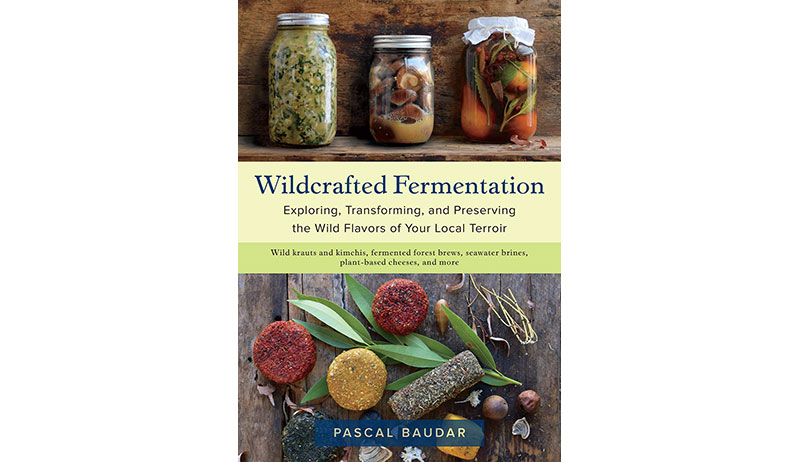
For homesteaders interested in food preservation, Wildcrafted Fermentation provides a valuable guide to the basics of fermentation. The book is likely to become a cult classic among those enthusiastic about both foraging and fermentation.

Author: Pascal Baudar
Cover Price: $29.95
Publisher: Chelsea Green Publishing
Get Wild
Unlike most other fermentation books published to date, Pascal Baudar’s Wildcrafted Fermentation focuses specifically on the fermentation of wild foods ranging from foraged greens to mushrooms and berries.
Despite this focus on incorporating wild ingredients, Wildcrafted Fermentation remains first and foremost a fermentation guide. And it is a good and thorough one at that.
The book outlines the fundamentals of fermentation (“good” bacteria vs. “bad” bacteria). It begins with a recipe to make good, old-fashioned sauerkraut with domestic cabbage.
From there, though, things escalate quickly. It isn’t long before readers find themselves reading a recipe for cattail sauerkraut (“cattailkraut”) and wondering what exactly a cattail might taste like.
Check out this review of No-Till Intensive Vegetable Culture by Bryan O’Hara.
Not a Foraging Guide
When it comes to the foraging side of things, Wildcrafted Fermentation goes into much less detail.
Not only does the book not tell you how to forage, it doesn’t spend much time talking about what to forage either. This, Pascal explains, is up to you to discover as you explore your own landscape.
Pascal does, however, advocate for foraging and fermenting predominantly non-native species. As he describes, “close to 90 percent of what I collect is non-native and often invasive. The plants are easy picking because they are extremely plentiful, but many of them are also very flavorful and nutritious.”
Picking non-native species isn’t a complete management strategy. But it certainly can help reduce invasive plant populations in your area.
Fermentation Fundamentals
Rather than providing instructions that must be followed exactly, Pascal is more interested in teaching widely-applicable techniques.
This open ended-ness permeates much of the book. This makes it a valuable resource for both adventuresome and traditional fermenters alike.
Pascal’s recipe for “wild radish pods fermented in barbecue spice blend” can, he explains, also be made with garden-variety vegetables if you don’t feel like foraging for radish pods. And the same goes for essentially every recipe in the book.
For those more adventurous foragers and fermenters, however, Wildcrafted Fermentation provides no shortage of inspiration. Pascal offers recipes that incorporate everything from wild mustard greens to oak bark.
There is an entire chapter called “Fermenting with the Environment” that explores capturing the flavor of a place through the fermentation process using techniques like fermenting inside of a log or in a bundle of leaves.
Fundamentally, Wildcrafted Fermentation is an exciting and entertaining book that promises to be a valuable resource for many different kinds of readers.
It will be a valuable guide for the novice fermenter setting out to make her first batch of sauerkraut, and an equally valuable source of inspiration for the experienced forager and fermenter looking for new horizons.




